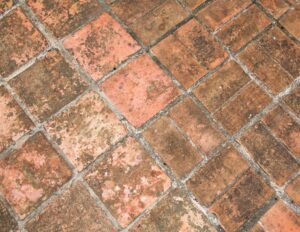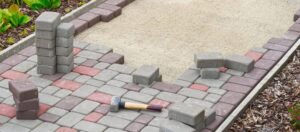When it comes to outdoor surfaces such as driveways, walkways, or patios, homeowners often face the decision between pavers and concrete. Both materials have unique properties, but one critical factor influencing this choice is the cost per square foot. So, at the end of the day, how must we tackle the decision between pavers vs concrete per square foot?
This article aims to explore the advantages and disadvantages of each material, including cost considerations between pavers and concrete, aiming to help homeowners make an informed decision based on their budget and preferences.
To do that, though, first we have to understand the differences between these two products, and only then can we properly compare them. So let’s get right into it!
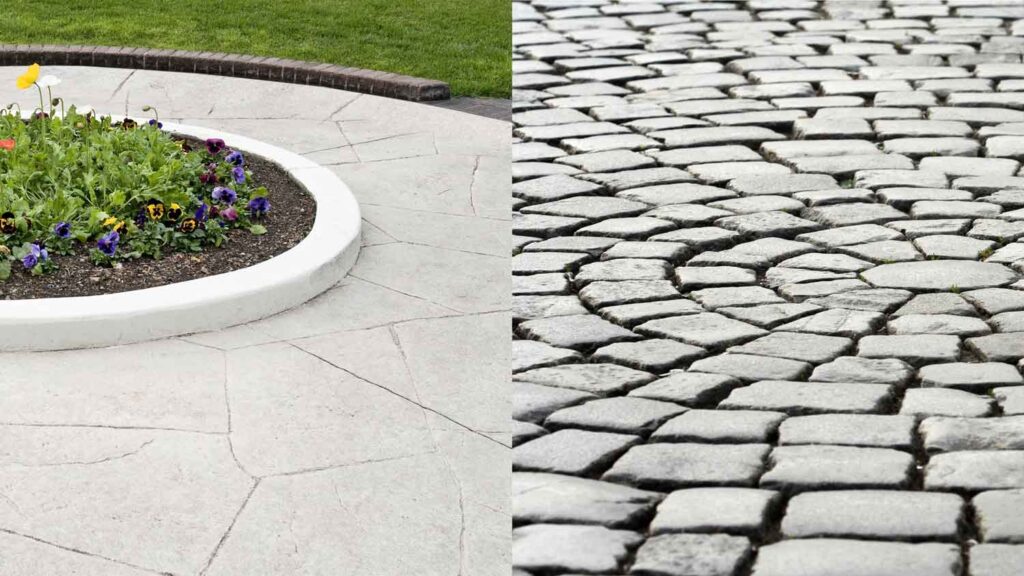
Jump to:
Pavers vs concrete per square foot: understanding the products
Concrete
Concrete has long been recognized as a reliable and versatile material for a wide range of construction purposes. In hardscape flooring, concrete offers numerous advantages that make it a possible choice for various outdoor applications.
It can be molded and shaped into an array of designs, accommodating different styles and preferences. From simple, clean lines to intricate patterns and textures, concrete offers endless possibilities for creative expression in hardscape flooring.
Concrete can also be enhanced through various techniques, such as stamping, staining, and coloring. These methods allow homeowners to mimic the appearance of natural stone, brick, or other materials, achieving the desired aesthetic while benefiting from the durability of concrete.
However, concrete leaves much to be desired in the durability department.
With concrete, cracking and chipping it’s a matter of when, not if. Even in the best scenarios and with the best maintenance practices, it can’t last more than two years or so before starting to present some structural problems.
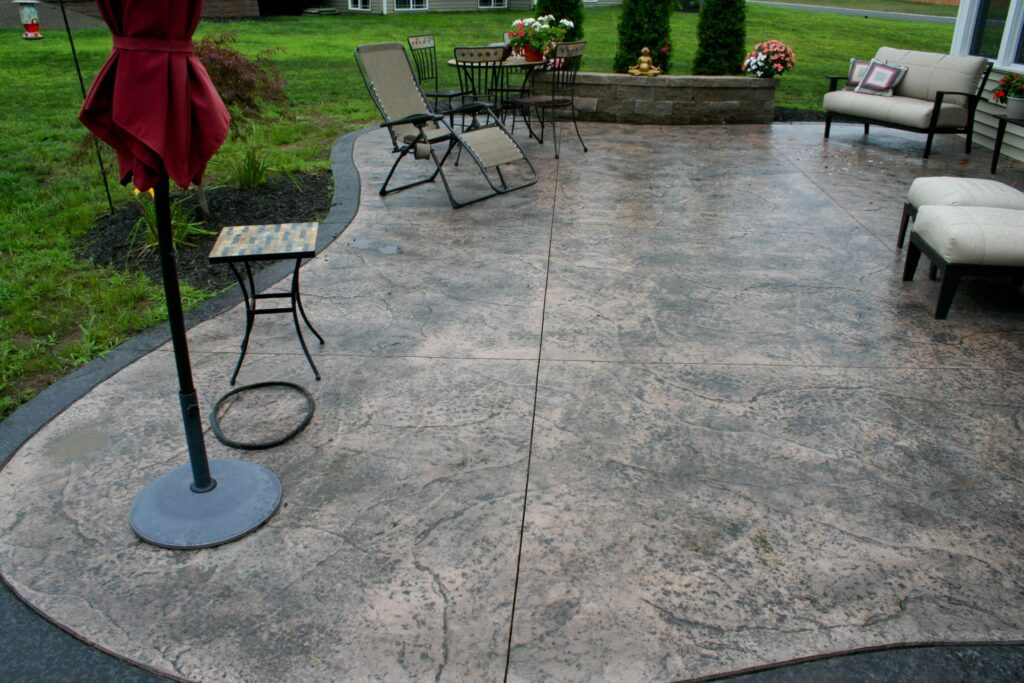
Pavers
Pavers have long been favored for their timeless charm, durability, and versatility in hardscape flooring. These individual units, typically made of materials like concrete, brick, or natural stone, offer numerous benefits that make them an excellent choice for outdoor applications.
Pavers come in a wide array of shapes, colors, textures, and patterns, allowing for endless design possibilities. Whether it’s a traditional brick pathway, a contemporary geometric design, or a rustic stone patio, pavers offer the flexibility to create unique and visually stunning outdoor spaces.
Pavers can be used to delineate different functional areas within an outdoor space, such as patios, walkways, and seating areas. Their aesthetic appeal extends beyond the flooring, as they can be integrated with features like fire pits, outdoor kitchens, and garden beds, creating a cohesive and inviting environment.
Pavers are designed to withstand extreme weather conditions, including freeze-thaw cycles and UV exposure. Their robust construction ensures minimal cracking, fading, or deterioration over time, making them a reliable choice for hardscape flooring.
And in the rare event of damage or a need for repairs, pavers offer a practical advantage. Since they are individual units, damaged pavers can be easily replaced without affecting the overall structure. This ease of repair makes pavers a cost-effective option in the long run.
Pavers vs Concrete: Cost factor
Concrete installation involves site preparation, formwork, pouring, and finishing. Labor costs for concrete are typically lower than pavers due to the simpler installation process. However, complex designs or special finishes can increase the overall cost.
Concrete surfaces are relatively low-maintenance, requiring periodic cleaning and sealing. These costs are typically lower compared to pavers, as concrete slabs have fewer joints or seams that require attention.
As for pavers, they come in different materials and price ranges. Concrete pavers are generally more affordable compared to natural stone or brick pavers. The material cost varies based on the type of paver chosen and its quality.
The installation process for pavers involves excavation, base preparation, edge restraints, sand bedding, and the actual paver installation. It is a labor-intensive process that requires skilled professionals. The complexity of the design, site conditions, and accessibility can influence the installation cost.
Long-term cost
Before moving on, there is a very important element of hardscape that we want to clarify.
When thinking about hardscape elements, you should always have the future in mind. When comparing prices, the winner should always be the product that gives you more value over time. That often means the more durable product, even if it costs less upfront, is the better choice.
Comparing prices
On average, the cost of concrete per square foot can range from $3 to $10. This price range typically includes both the materials and labor costs involved in the installation process. However, it’s important to note that these prices can vary significantly based on regional differences, market conditions, and individual project requirements.
As for pavers, the cost per square foot can range from $5 to $30 or more. This price range typically includes the cost of materials and labor for installation. It’s important to note that higher-end or specialty paver materials, such as natural stone or imported pavers, can be more expensive compared to concrete pavers.
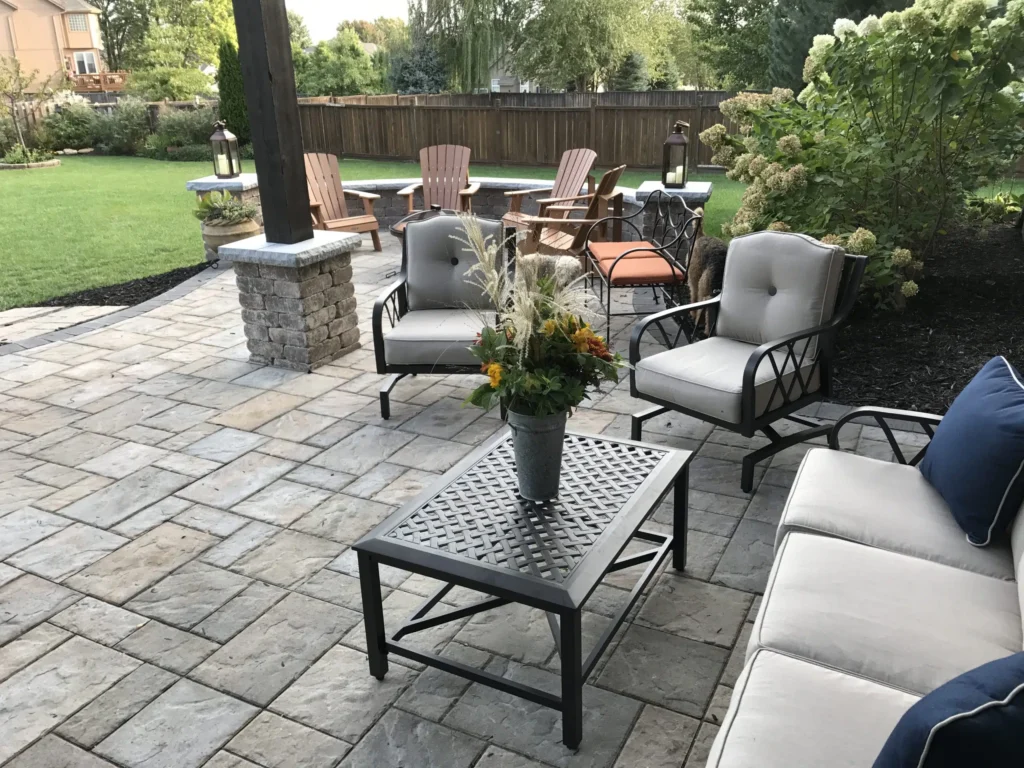
So, at first glance, pavers are three times more expensive than concrete, right?
Well, not when you think long-term.
As we mentioned, concrete flooring usually lasts about two years or so before it has to undergo a big renovation project. So you will basically be paying for it again in two years.
Pavers, however, can last decades without showing any sign of wear and tear. And even if they get damaged, you can easily replace the individual pieces instead of investing in a whole new installation.
Pavers vs Concrete per square foot: Conclusion
So, to summarize, concrete is cheaper upfront, but will require many more investments in the future. Pavers, on the other hand, are more expensive at first – but can last decades without requiring further investments.
In the long run, pavers are the clear winner.
But choosing between pavers and concrete per square foot involves weighing several factors, including material costs, installation expenses, long-term maintenance, durability, and aesthetic preferences.
Ultimately, the decision should be based on individual needs, budget constraints, and the desired visual appeal. It is advisable to consult with professionals and gather multiple quotes to make an informed choice that aligns with both short-term and long-term considerations.
Remember, the quality of installation and ongoing maintenance practices will significantly impact the lifespan and overall cost-effectiveness of either option.
We here at JS Brick are very well aware of that. Over our 23 years of activity in the hardscape business, we have seen some installations go terribly wrong for lack of proper maintenance or because of some mistakes during the installation process, especially those tackled from a DIY perspective.
The best course of action is to hire professional hardscape contractors you can trust in your area to help you make that decision between pavers and concrete and with the overall project.
And in case you are around our area of activity, the Sarasota County in FL, why not contact us to give you that help? We would be glad to be of service and add you to our long list of satisfied customers.

